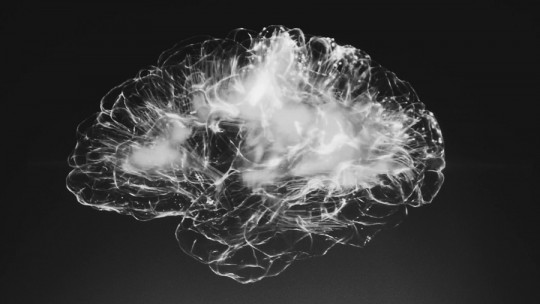
There are a wide variety of disorders in which amnesia appears as the main symptom, these being known as amnestic disorders. These disorders could be due both to the persistent action of substances and to the physiological effects of a medical illness.
Amnestic disorders are characterized by a notable impairment of memory to remember remote events; while in these cases they normally remember immediate facts or events. On the other hand, the ability to learn and remember new things is greatly affected (anterograde amnesia), which could lead to problems with orientation in time.
In this article you will find a summary of what amnestic disorders consist of what are its diagnostic criteria and also the different types of these pathologies that exist.
What are amnestic disorders?
When we talk about the word amnesia in Psychology, we are referring to the partial or even all loss of memory functions, which means that The person who suffers from it will be unable to acquire (retain) and/or evoke (recover again) the information so it would be impossible for you to remember or retain information from a specific period of time.
Amnestic disorders, on the other hand, are a series of syndromes characterized primarily by memory impairment marked enough to remember remote events, while the memory to remember immediate facts or events is usually preserved. In addition, the ability to learn and remember new things is greatly affected (anterograde amnesia), which could lead to problems with orientation in time.
In amnestic disorders we can also find anterograde amnesia although of varying degrees of intensity, and may also decrease over time, in the event that the disease and/or the underlying pathological process have a tendency to remit over time, with a medical and psychotherapeutic approach that has been started on time and is appropriate for this type of case.
The prognosis of amnestic disorders will depend on the course of the basic lesion, which normally affects the brain region of the hippocampus or to the hypothalamic-diencephalic system. Initially, a complete recovery is possible.
Classification and diagnostic criteria of amnestic disorders
In the Diagnostic and Statistical Manual of Mental Disorders (DSM-IV-TR), of the American Psychiatric Association (APA), we can find amnestic disorders classified within the following category: “Delirium, dementia, amnestic disorders and other disorders cognitive”. Next we will see what the diagnostic criteria for amnestic disorders are in the DSM-IV-TR.
People with some types of amnestic disorders mainly have impaired ability to learn new information, and also fail to remember past events or previously learned information (Criterion A). Memory impairment could be harmful enough to cause significant impairment in social or work activity, which could represent a significant decrease in the level of activity that was previously present (Criterion B). The memory alteration does not appear exclusively during the course of dementia or delirium (Criterion C).
It should be noted that the ability to remember new information is always affected, while the difficulty in remembering information that had been learned before the disease can occur in a more variable way, depending on the severity and/or location of the disease. brain injury.

Besides, The memory deficit is usually more apparent in those tasks in which spontaneous recall is necessary, this deficit may be evident at the moment in which the examiner provides the person suffering from some of the amnestic disorders with a series of stimuli to evoke them later. These deficits could be predominantly related to visual or verbal stimuli depending on the brain area that is specifically affected.
In some types of amnestic disorders, the affected person may be able to remember things from the very remote past better than events that have happened more recently (for example, the person remembers when they went on vacation abroad with their family more than a decade, being able to express the details of said event, but, on the other hand, does not remember what he did that same morning).
In case memory impairment appears exclusively during the course of delirium The diagnosis of amnestic disorders is not established (e.g., if it only occurs in the context of a reduction in your ability to direct or maintain attention).
Furthermore, in amnestic disorders The ability to immediately repeat a sequence of information is not altered (e.g., repeating some digits that you have just heard) and, if this capacity is affected, it was necessary to suspect that there was an alteration in the ability to pay attention, which could be an indication that the patient was suffering from delirium. .
Symptoms of amnestic disorders
There are a series of symptoms that allow us to detect when we would be facing a case of amnestic disorder, as we will see below. First of all, it is worth mentioning that amnestic disorders are diagnosed in the event that there were other cognitive deficits that are characteristic of dementia a (e.g., agnosia, aphasia, or impaired execution ability). Furthermore, people with any of the amnestic disorders could experience serious deterioration in their social or personal abilities due to their memory deficit, requiring supervision in their daily lives.
On the other hand, it is quite common for amnestic disorders to come preceded by a clinical picture of disorientation and confusion as well as problems in their attention span that would suggest the possibility that that person was suffering from delirium, as is the case with amnestic disorders caused by a thiamine deficiency.
When amnestic disorders begin to develop, confabulations are quite common, although they tend to disappear after a while; However, this makes it necessary for the clinician who is carrying out the evaluation with the patient to have to resort to the help of family members or close friends to gather important information.
In the case of deep amnesia, the patient could suffer from temporal-spatial disorientation ; However, autopsychic disorientation is rare, since this is more common in cases of dementia.
On the other hand, patients with amnestic disorders it is difficult for them to recognize their memory deficit, so they could explicitly deny the possibility that they were suffering from this deterioration. There could also be some personality alterations such as emotional fragility, lack of initiative or apathy, among others.
Furthermore, patients with amnestic disorders may appear pleasant and friendly only superficially, since show very poor or narrow emotional expressiveness.
On the other hand, in cases of transient global amnesia, patients may appear dazed and perplexed. Less severe deficits may be observed in other cognitive abilities, but they are not severe enough to cause clinically significant impairment.
Types of amnestic disorders
Now that we have seen what amnestic disorders consist of, what their diagnostic criteria and symptoms are, let’s look at the types of amnestic disorders that we can find in the DSM-IV-TR.
1. Amnestic disorders caused by a medical illness
In this case, Criteria A and B would be the same as those explained above for all amnestic disorders in general, being produced in this case by a medical illness.
Besides, For this diagnosis it would be necessary to demonstrate it through your clinical and vital history a physical examination and/or through tests carried out in the laboratory, in order to verify that the deterioration in memory suffered by the patient has been directly caused by a medical illness (Criterion D).
The most common medical illnesses that can cause amnestic disorders are the following:
2. Substance-induced persistent amnestic disorders
Criteria A and B are the same as those explained above for all amnestic disorders in general, in these cases being substance-induced. Criterion C requires that the memory alteration does not appear exclusively during the course of delirium or dementia, and must persist beyond the usual time of abstinence to substances or the usual time of substance intoxication.
In addition, it is necessary to carry out an examination of your clinical and life history, a physical examination and/or some laboratory tests to be able to verify that the alteration you suffer in your memory is directly related to the effects of the substances (Criterion D ).
- Related article: “What damage to the brain do drugs cause?”
3. Amnestic disorders not otherwise specified
The diagnosis is made in those cases in which The necessary criteria are not met to diagnose any of the aforementioned amnestic disorders (e.g., when we find a patient who suffers from amnesia, but there is no evidence to demonstrate its specific etiology, such as it could have been due to substances or an illness, among others).








